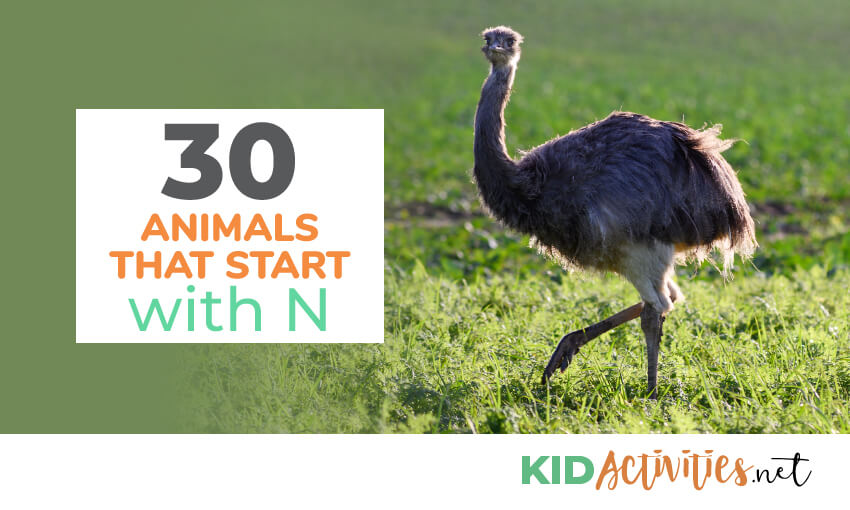1. Naked Mole Rat:
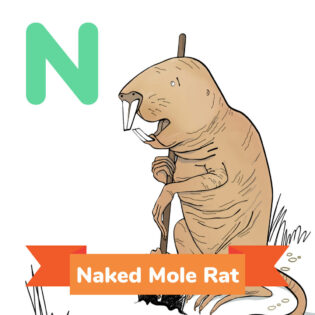
With teeth that can operate independently of one another, the naked mole-rat is a rodent that lives underground and consumes parts of plant roots and tubers.
Holding its very large incisors, the naked mole-rat has tremendous muscle mass in its jaws that possess about 25% of the animal’s total muscle mass.
They use these incisors to be able to obtain all of the necessary hydration and nutrition needed from their solely plant-based diet.
Most small rodents only live for a few years; however, the naked mole-rat can live up to 30 years.
Due to their underground environment, these rodents are generally blind but have a great sense of smell that allows them to understand their surroundings and communicate with one another.
2. Narwhal:
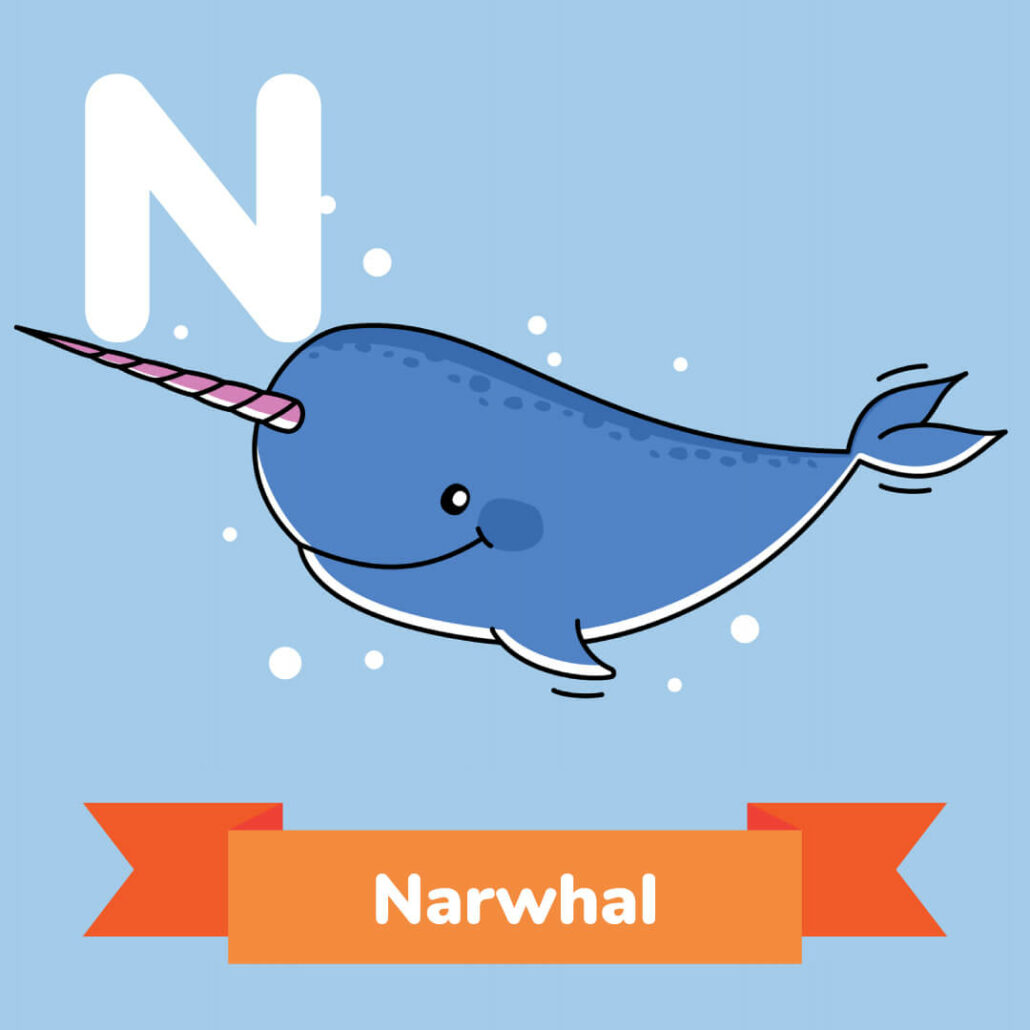
Known as the unicorn of the sea, the narwhal belongs to a species of the whale and is known for its long and spiraled tusk.
The tusk is a tooth that can grow up to 9 feet long and mostly only develops in males, although some exceptions do occur.
These mysterious creatures have been the center of scientific curiosity as their habits and artic surroundings have made them difficult to research thoroughly.
Scientists currently believes that nerves and tiny holes that are plentiful on the tusk allow seawater to enter the Narwhal’s body.
This assists the creature by the means of allowing it to detect changes in temperature or water saltiness.
These factors may support the survival rate of narwhals as they are able to find prey more easily.
3. New Guinea Singing Dog:
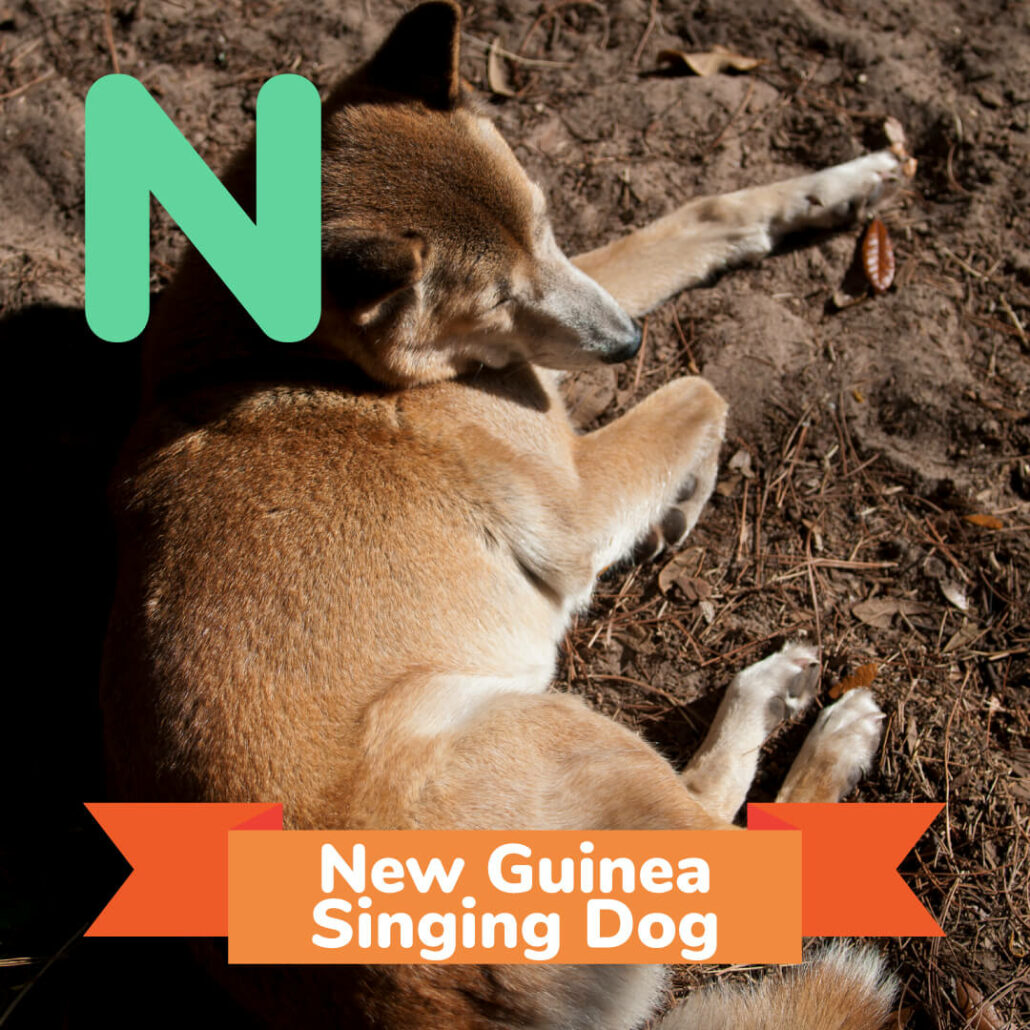
The New Guinea singing dog looks like a pet dog but is an extremely agile hunter.
They are well adapted, climbing and jumping like cats, due to their extremely flexible joints and spines.
They have a black and tan coat or are goldish red and have petal-shaped ears and narrow muzzles.
The name of the animal was due to the fact that singing dogs can vocalize in a way that is similar to a dingo or wolf.
Their unique howl on a sonogram resembles that of a humpback whale’s song.
When one dog begins singing and others join along, they can yodel at different pitches.
4. Newt:
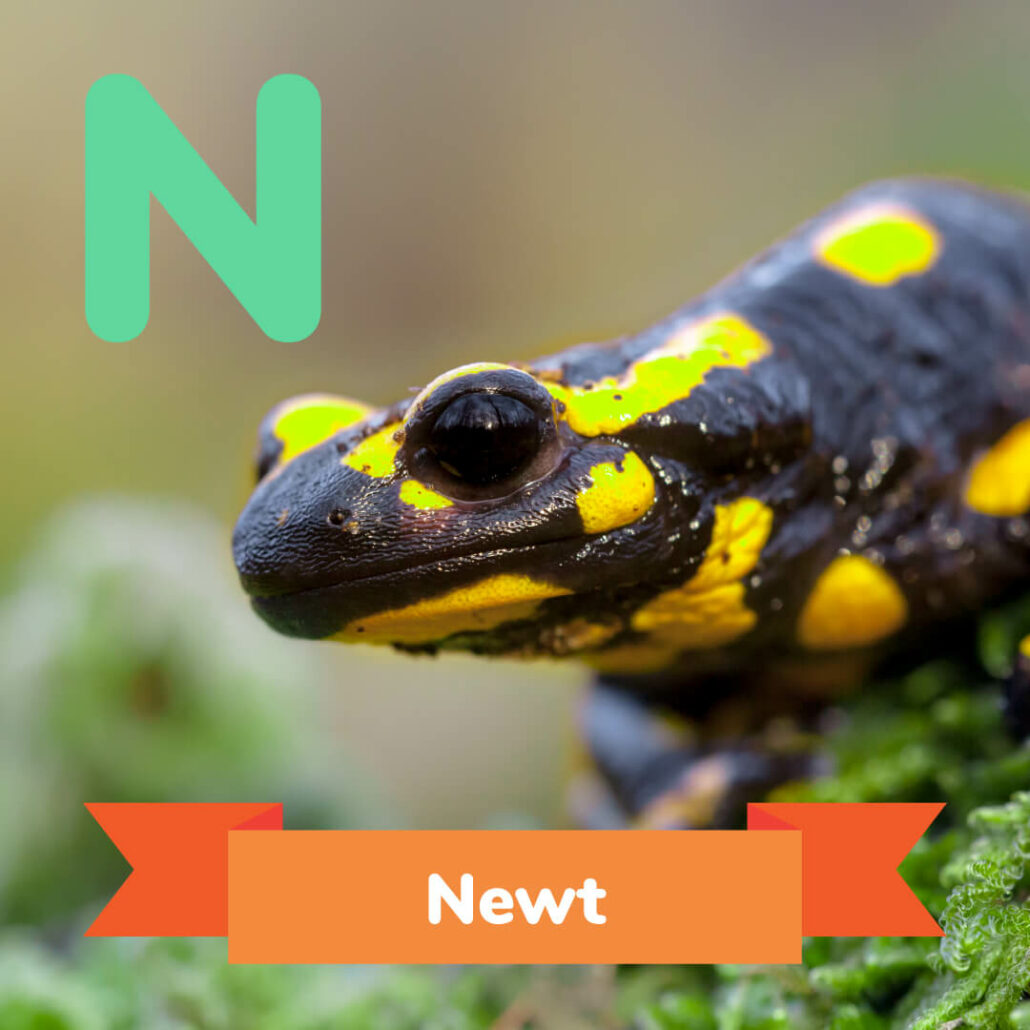
Belonging to the Salamandridae family, the newt is a semiaquatic animal with a lizard-shaped body.
Most of the 60 species of Newts have smooth but moist skin.
They come in many different sizes and can have lungs that are well-developed or can retain gills to be completely aquatic dependent on the species.
Newts have been found plentiful in the Northern Hemisphere and vary in activeness dependent on their environments.
Some newts are active only at night and others during the day. One feature that researchers have been particularly captivated by is the ability of newts to regenerate fully functional limbs (including heart muscle).
5. Nighthawk:
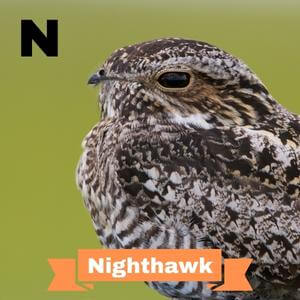
The common nighthawk is a bird that travels thousands of miles in large flocks towards South America each year.
They have a life expectancy of at least four to five years and is known for its bat-like flying that allows it loop and change directions of flight very frequently.
Common nighthawks primarily eat flying insects using their hooked bills. The bird is medium-sized but difficult to spot during the day as it is nocturnal, conducting most activity at night time.
6. Nightingale:
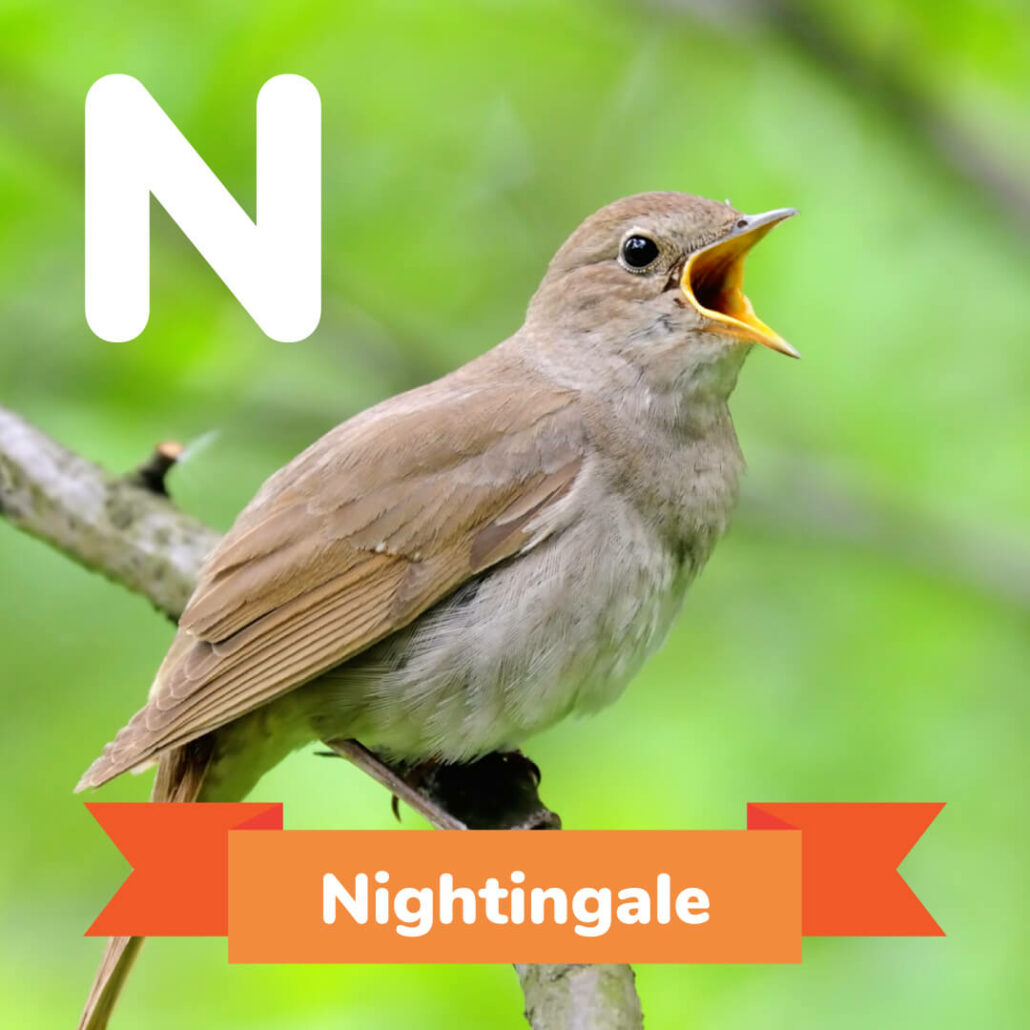
With natural enemies like rats, lizards, foxes, and snakes, the nightingale has become a highlight secretive animal that lives most of its time within dense bushes.
A nightingale is a small bird that is best known for its beautiful singing abilities. Male nightingales use songs to serenade migrate females as they fly over during the night.
They feed mainly on insects build their nests just above the ground within bushes.
Due to their proximity to the ground, nightingales primarily forage for ants and beetles.
Due to a blend of factors in the last 50 years, such as an increase in deer and climate change, nightingales have declined by as much as 90%.
7. Needlefish:
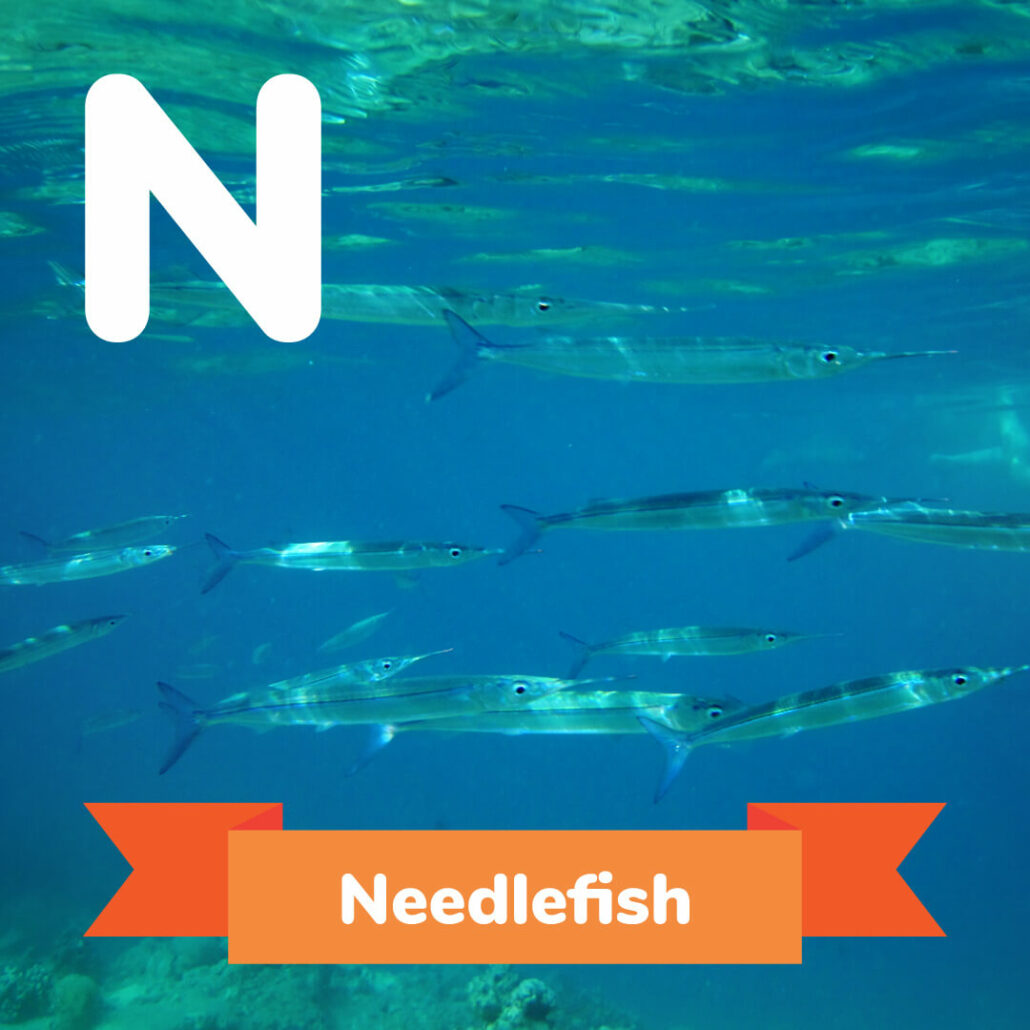
coastal waters from Maine Brazil.
8. Nabarlek:
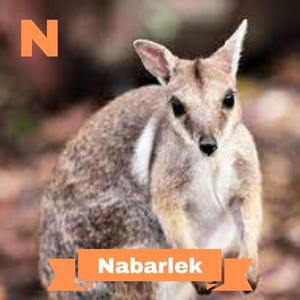
A small marsupial that is also known as the Little Rock-wallaby, the Nabarlek is a small kangaroo that is found in northern Australia.
Nabarleks are known for the powerful legs, used for hopping and jumping, as well as their long tails, used for balancing.
They are shy and nocturnal animals, residing in forages and rocky hollows.
Living in rocky hollows, nabarleks have thickly padded feet that allow them to properly grip onto rock using skin friction. The body of a nabarlek is covered in short but silky soft fur.
9. Nandu:

The Nandu is a large flightless bird that ways approximately 50 pounds and is very distantly related to the emu and ostrich.
Nandus are commonly found in Argentina and Brazil.
These South American birds use their long, strong legs to outrun any nearing trouble and use their large wings for balance and change of direction as it runs.
Female Nandus collectively lay their eggs in a ground nest. Each nest can hold up to 50 eggs or more from several different females. These birds are social and are opportunistic eaters.
They eat anything from plants to fruits to insects, birds, and other small animals.
10. Nightfish:
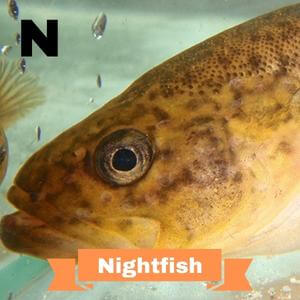
Located in the coastal streams, lakes, and ponds, the Nightfish is a freshwater fish found in Southwestern Australia.
Nightfish only grows to be about 6 inches long but is an ambush predator.
This predator only hunts at night, hunting small fish, crayfish, and aquatic insects.
During the day time, the Nightfish hides under stones or among various vegetation, however, at night this species becomes active.
Nightfish migrate to spawn during the months of August and September after winter rains take place.
They live in temperatures between 10 degrees Celsius and 25 degrees Celsius. The maximum life span of a Nightfish is approximately six years.
11. Nautilus:
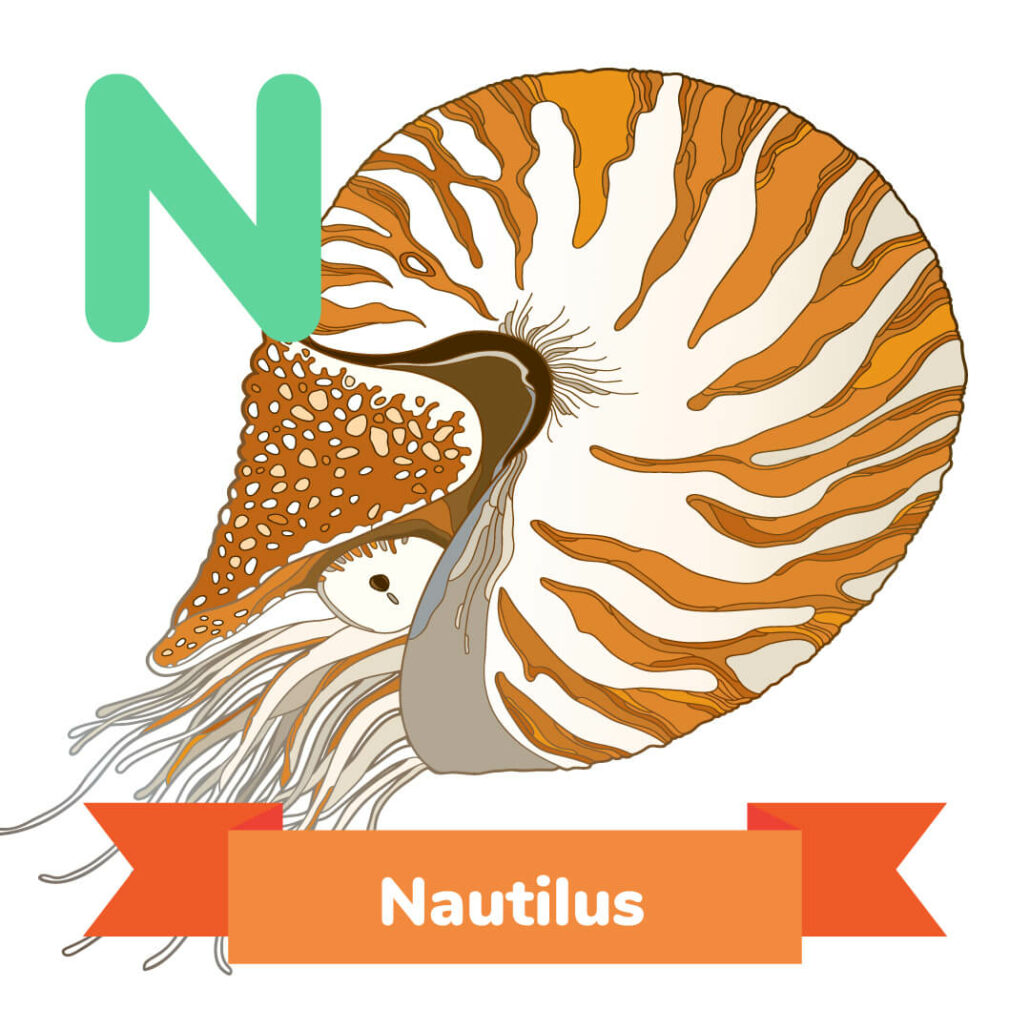
Using jet propulsion to roam the deep ocean, the nautilus is a mollusk that is comprised of a soft-body within a hard-external shell.
The shell has many interior chambers that serve unique purposes or functions. The largest chamber holds the animal, while the other chambers act like the tanks in a submarine.
Seawater is pumped through the chamber and expelled by the pulling of its body into the chamber, propelling the overall mollusk.
12. Napu:
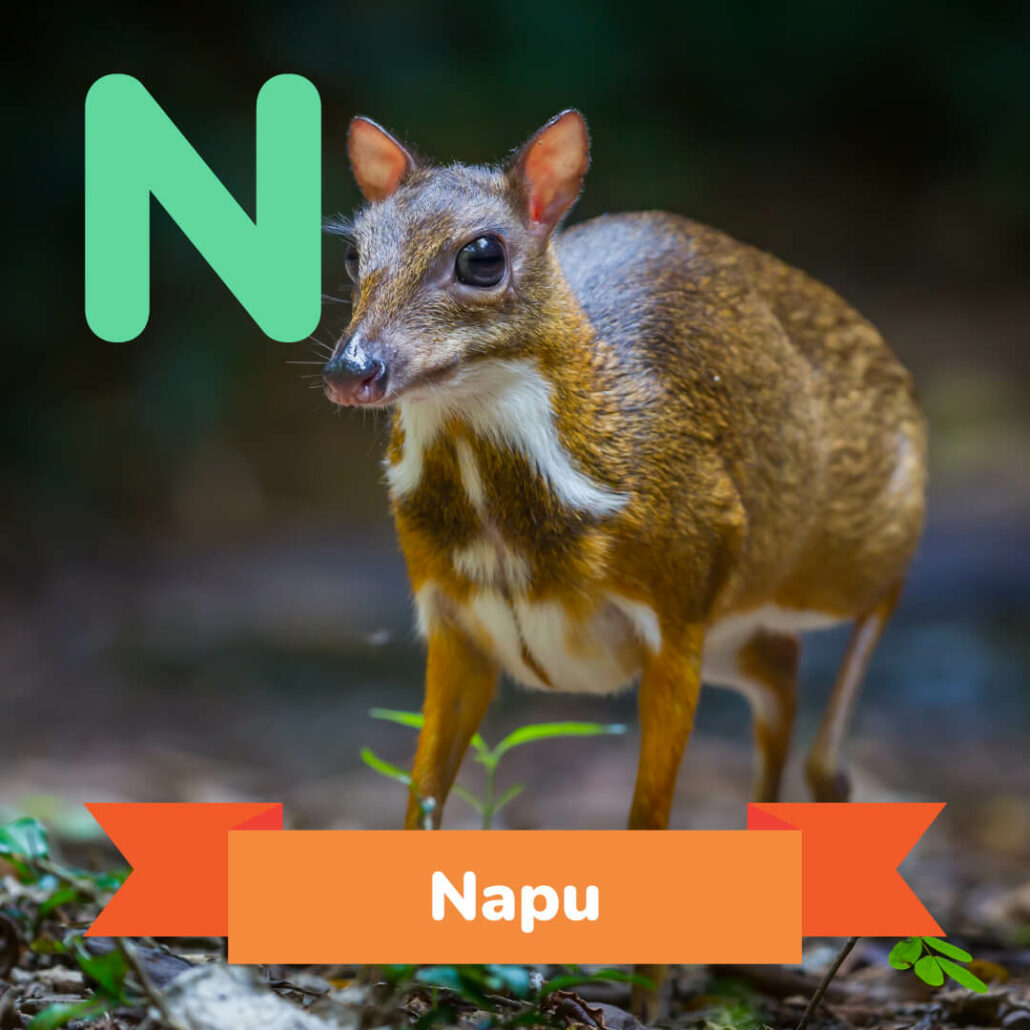
Dubbed “living fossils” due to minimal change in the species for millions of years, the Napu is a larger mouse-deer.
Their hind feet are taller than their front feet.
The animal is about the size of a rabbit with very long and thin legs, a rounded body, and a triangular head.
The mouse-deer lives in Thailand, Sri Lanka, the Malayan Peninsula, Indochina, as well as a few other regions.
Another name for the napu is the Malay mouse-deer. With human care, this animal can live up to 16 years.
13. Nightjar:
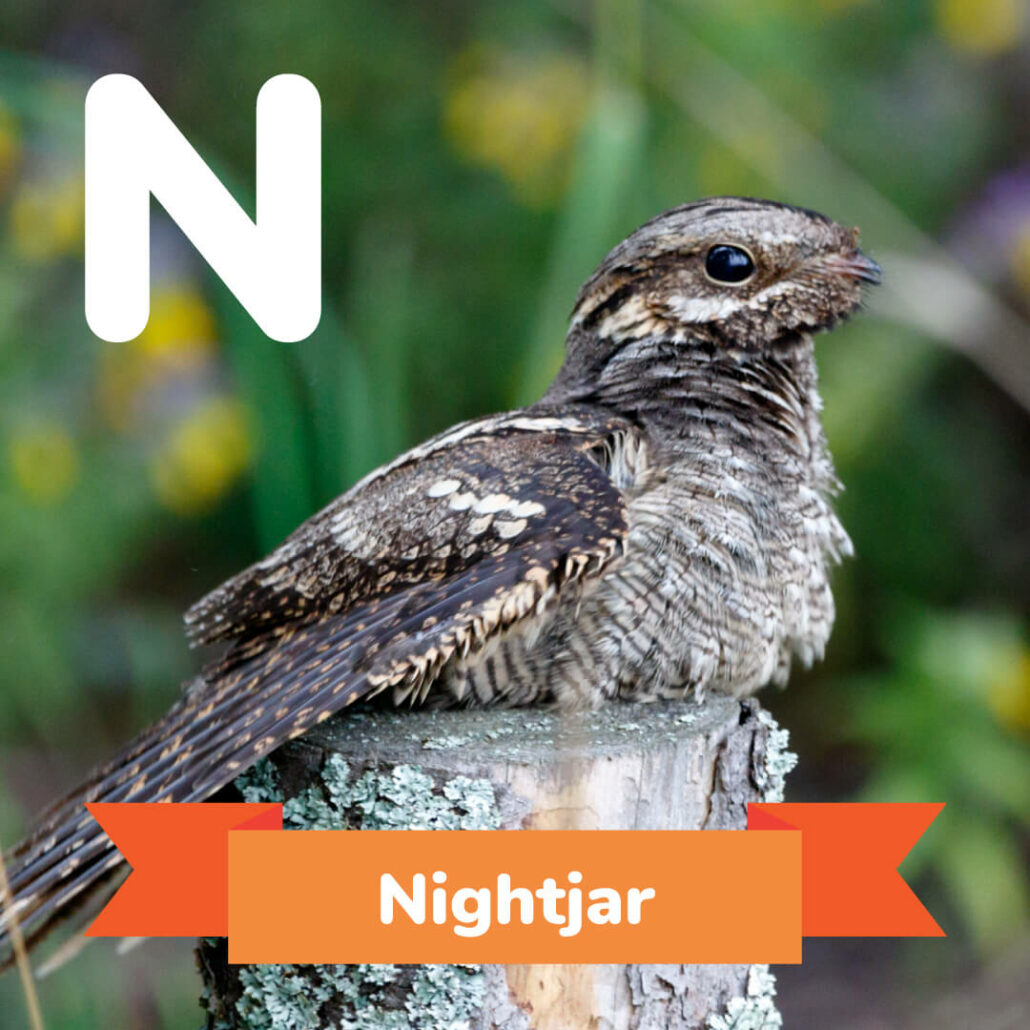
Belonging to the Caprimulgidae family, the nightjar is a medium-sized bird with long wings, short legs, and a very short bill.
The nightjar is nocturnal and is considered a silent flyer with grey-brown camouflaged plumage perfect for being untraceable during the daytime.
One myth surrounding nightjars is that they have the ability to suck milk from goats.
However, they have only been observed to eat moths and beetles and can be seen on plantations or open woodlands.
At dusk, nightjars make loud calls to one another as males seek to attract their mates.
14. Nalolo:
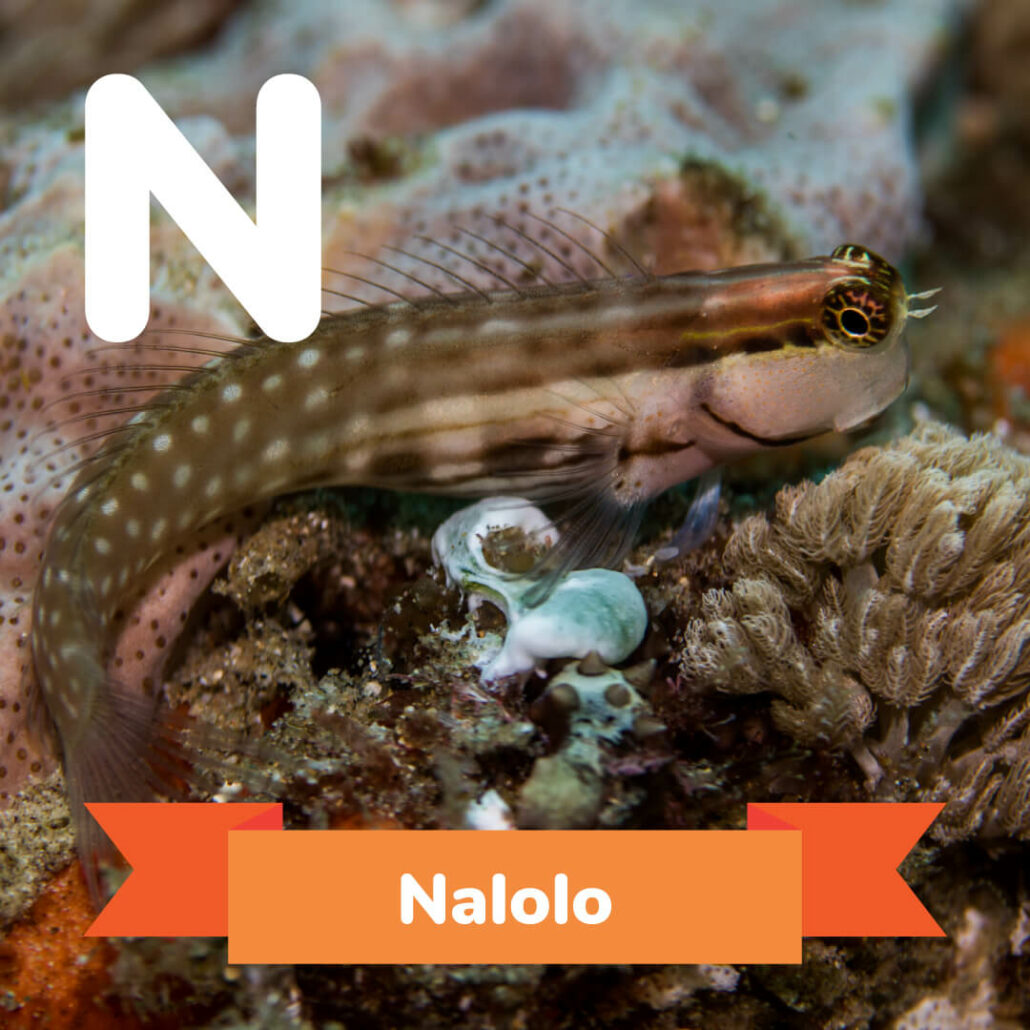
The nalolo is a species of the combtooth blenny and is found in coral reefs in the Indian ocean.
This creature can grow to be 6.5 centimeters long and primarily feeds on plants, including algae and weeds.
Their complete species name is the Ecsenius nalolo but in South Africa, they are commonly known as Nalolo.
15. Ningaui:
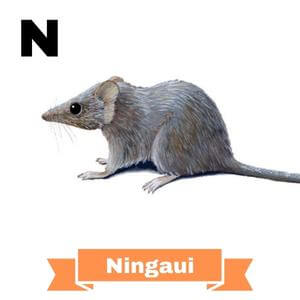
Members of the dasyurid family, the Ningaui is among the smallest of the marsupial group.
This tiny animal can be found in isolated numbers in Australia.
The Ningaui has an average life span of about 14 months. With a breeding season that runs from September to February, a single litter is produced per season.
Due to the already short life span of the Ningaui, this means in each female’s lifetime only one litter of 5 to 7 offspring is produced.
This animal is primarily nocturnal and eats invertebrates, but as also been spotted on occasion consuming small reptiles.
Ningaui has a tail that is long (relative to its body) and hairless.
16. Noddy:
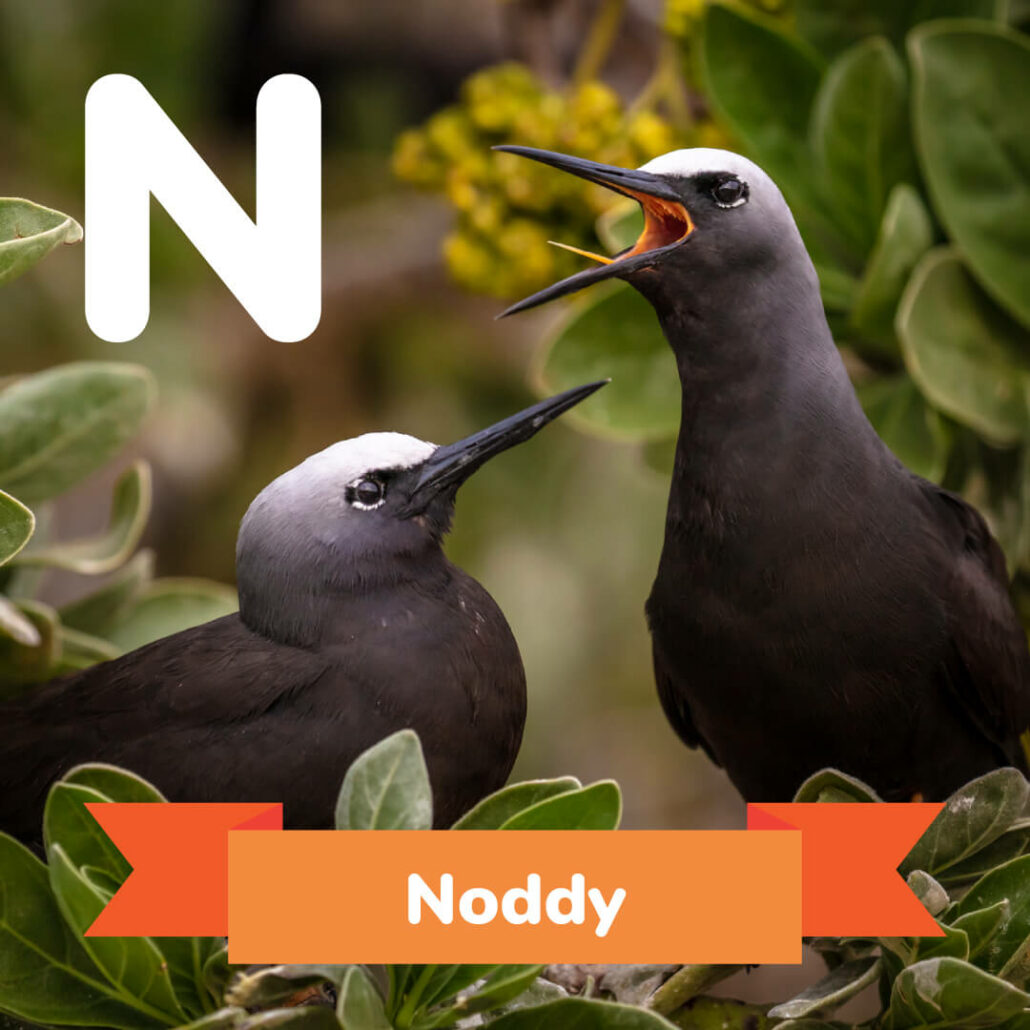
Belonging to the family Laridae, the Noddy is medium-sized seabird.
It can have a black plumage and a white cap, depending on the species.
Noddies usually nest on elevated regions such as cliffs or in shrubs and short trees.
The brown Noddy is an animal that has been found to live in the Galapagos Islands. There are five total species of noddies under the umbrella genus of Anous.
These birds are tropical and have a wedge-shaped body with forked tails. Noddies have been spotted in Eurasia, North America, tropical Africa, and even South America.
17. Natterjack:
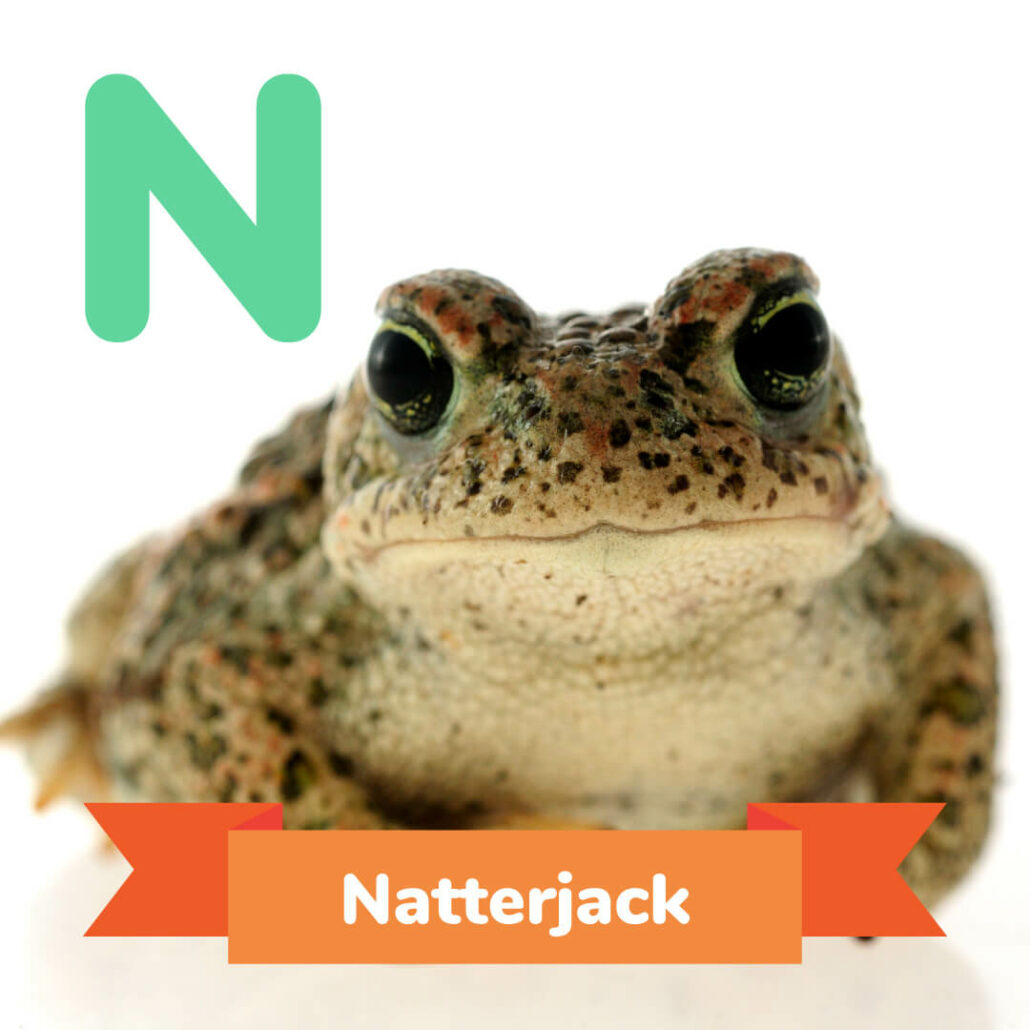
With distinct male mating calls, the Natterjack is a toad that is native to areas of Europe.
Adults are typically anywhere from 60-70 mm in length and are distinguishable from other common toads due to the yellow line that is present down the middle of the toad’s back.
Natterjacks require water that is warmer to successfully breed. They are poor swimmers but quick on land; they are known for being runners rather than hoppers.
Natterjacks consume moths, woodlice, and other invertebrates as the main components of their diet. These animals are found in coastal sandy regions and along coastal marshes.
18. Noctule:
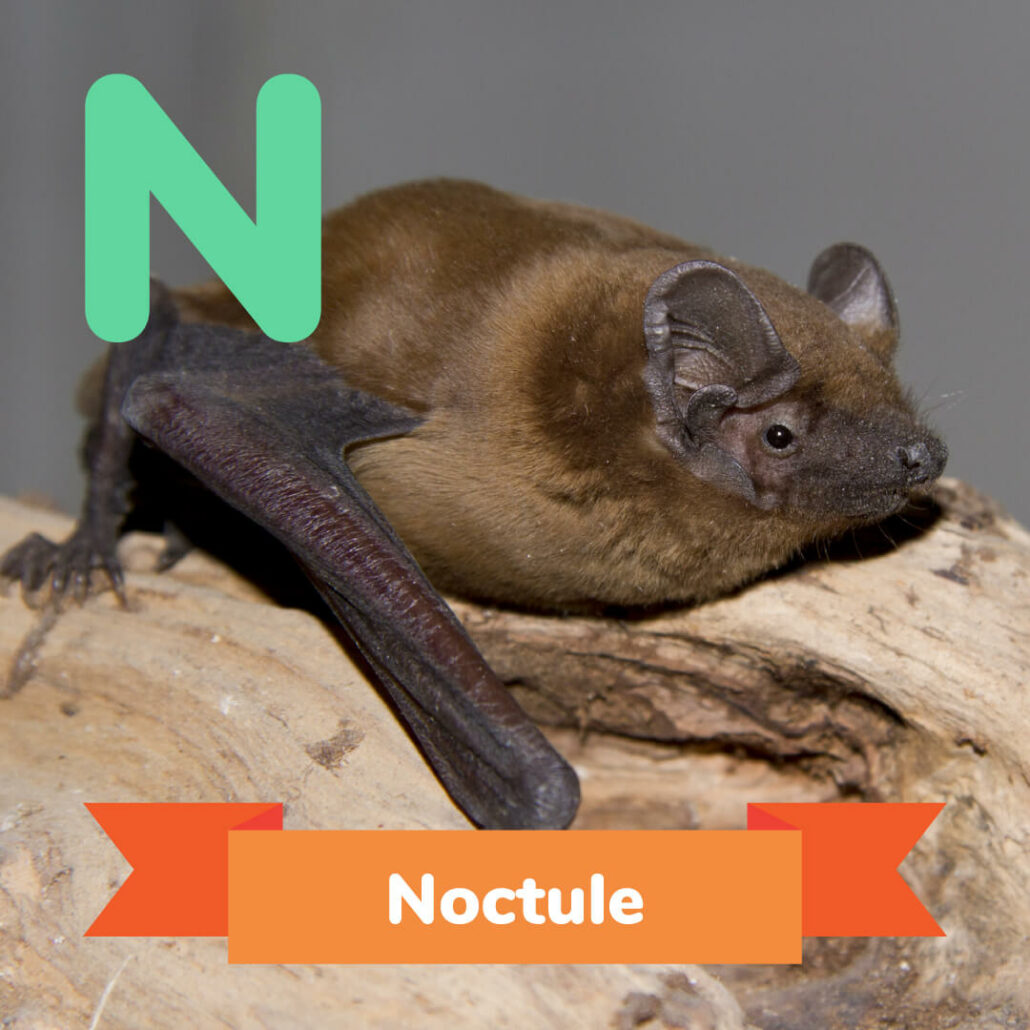
The noctule is a species of bat that is common throughout Asia, North Africa, and Europe.
They are currently listed under the “least concern” under conservation status.
Noctules are tree dwellers and live in holes belonging to woodpeckers.
As the name suggests, the noctule is a nocturnal animal and is the UK’s largest bat.
They feed on moths and other flying insects that they find in their surroundings using echolocation.
The noctule has fur that is golden-brown and dark facial features and wings. During the winter months, this species of bats, like many mothers, hibernate to conserve energy.
19. Nunlet:
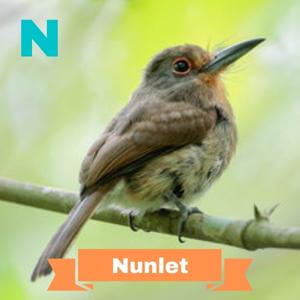
A species of the puffbird in the family Bucconidae, the nunlet is commonly found in Peru, Colombia, and Ecuador.
The nunlet lives in a subtropical and tropical forest and is rare.
This species of puffbird is in a state of population decrease, although it remains under the “least concern” category of conservation status.
The nunlet does not migrate and very little information is known on the bird’s feeding behaviors.
This animal is found near rivers and has a chestnut cap, with a gray cheek and neck.
The bolder visuals of this bird allow it to be more distinguishable from other birds within the forest habitat.
20. Nurseryfish:
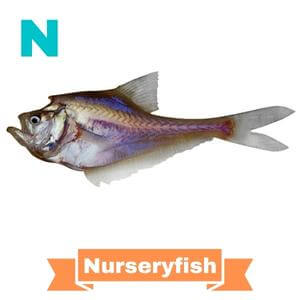
Native to the waters of India, Southeast Asia, New Guinea, and northern Australia, the Nurseryfish is a member of the genus Kurtus.
The nurseryfish is a compressed deep-bodied fish found in the lower ends of rivers and mangroves.
This species of fish is noted for their carrying of egg clusters on hooks that protrude from male foreheads.
Female nurseryfish do not have this hook but both the males and females have an elevated back that is formed in a hump shape. These fish are native to fresh and coastal marine waters.
21. Nilgai:
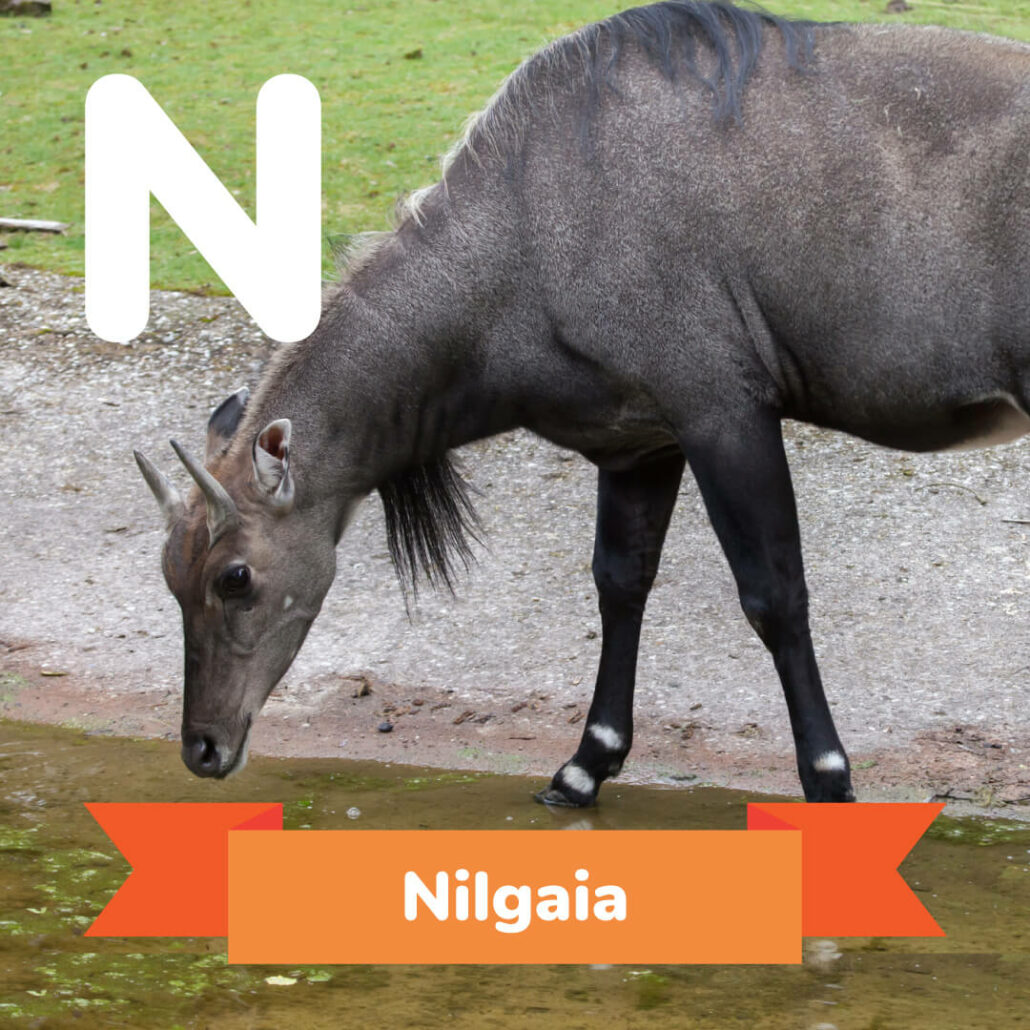
The nilgai, also known as the blue bull, is the largest antelope in Asia.
These antelopes are the only members of the Boselaphus genus.
Nilgai is hunted for their meat and can weigh around 700 pounds.
In the world, there is a total population estimate of approximately 140,000 nilgai.
This animal is mainly active during the day and is observed in three distinct bands/ groups.
One of the three bands includes one/two females with calves. When necessary, Nilgai can run anywhere between 980 feet to 2,300 feet.
This high-endurance animal is a herbivore, preferring grass and herbs.
22. Noodlefish:
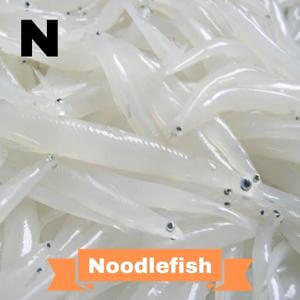
Also known as Salangidae, the noodlefish is related to the smelts.
They are commonly found in eastern Asia and are observed in the highest abundance in China.
The noodlefish is a threatened species and is being exported to southern Europe or consumes in east Asia.
The head of the noodlefish is depressed and holds an abundance of teeth.
This species consumes crustaceans and tiny fish as main components of their diets. Some noodlefish are anadromous and only appear in freshwater when spawning time nears.
23. Nightcrawler:
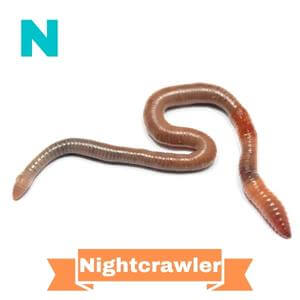
A fisherman’s favorite bait, the term “nightcrawler” refers to earthworms that can be observed foraging during the evenings.
The nightcrawler belongs to the Lumbricidae family.
It is the largest earthworm that can be found in Colorado and can reach lengths of 20-25 cm.
The nightcrawler is originally native to Asia and Europe but was an introduced species to the U.S. This species creates permanent burrows and rarely enters soil.
The most active time for nightcrawlers is just after rains and drizzles continue on.
The movement that the worms make allows for aeration of the soil and allows for healthier ground surroundings. The nightcrawler is a hermaphrodite but cannot self-fertilize.
24. Numbray:
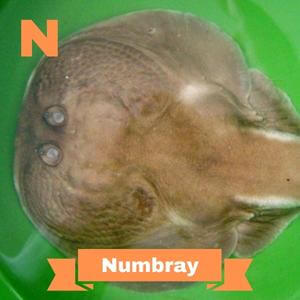
The sleeper ray, more formally known as numbray is a species of electric ray found in muddy estuaries.
The numbray is a very weak swimmer that relies on being buried at the bottom of the ocean floor.
This fish eats small aquatic mammals and fish.
The numbray can send shocks of 200V and is also dubbed the “coffin ray.”
This fish is unique to Australia and can grow to be quite large. Numbrays have been noted to eat penguins whole after electrocution and using very expandable mouths.
25. Numbat:
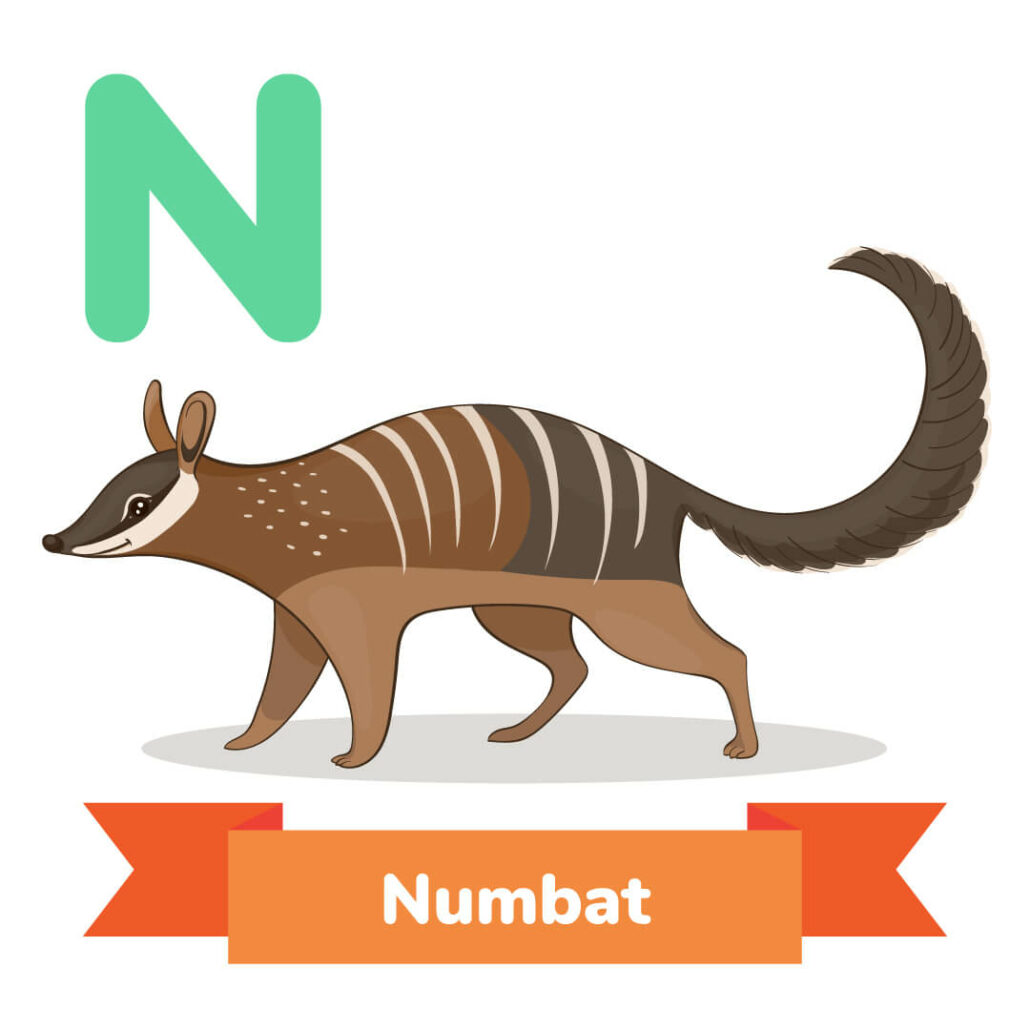
A marsupial that does not have a pouch on their belly, the numbat is a small animal found in Western Australia.
In captivity, the numbat can live anywhere between four and eight years.
The numbat is an endangered species that is reddish-brown in color and has a white and black striped body.
This marsupial consumes termites almost exclusively. Under conservation status, the numbat is described as threatened.
This small creature can grow to be 14 to 18 inches long. The numbat primarily remains active during the daytime and has a degenerate jaw that does little in assistance in holding 50 nonfunctional teeth.
26. Nutria:
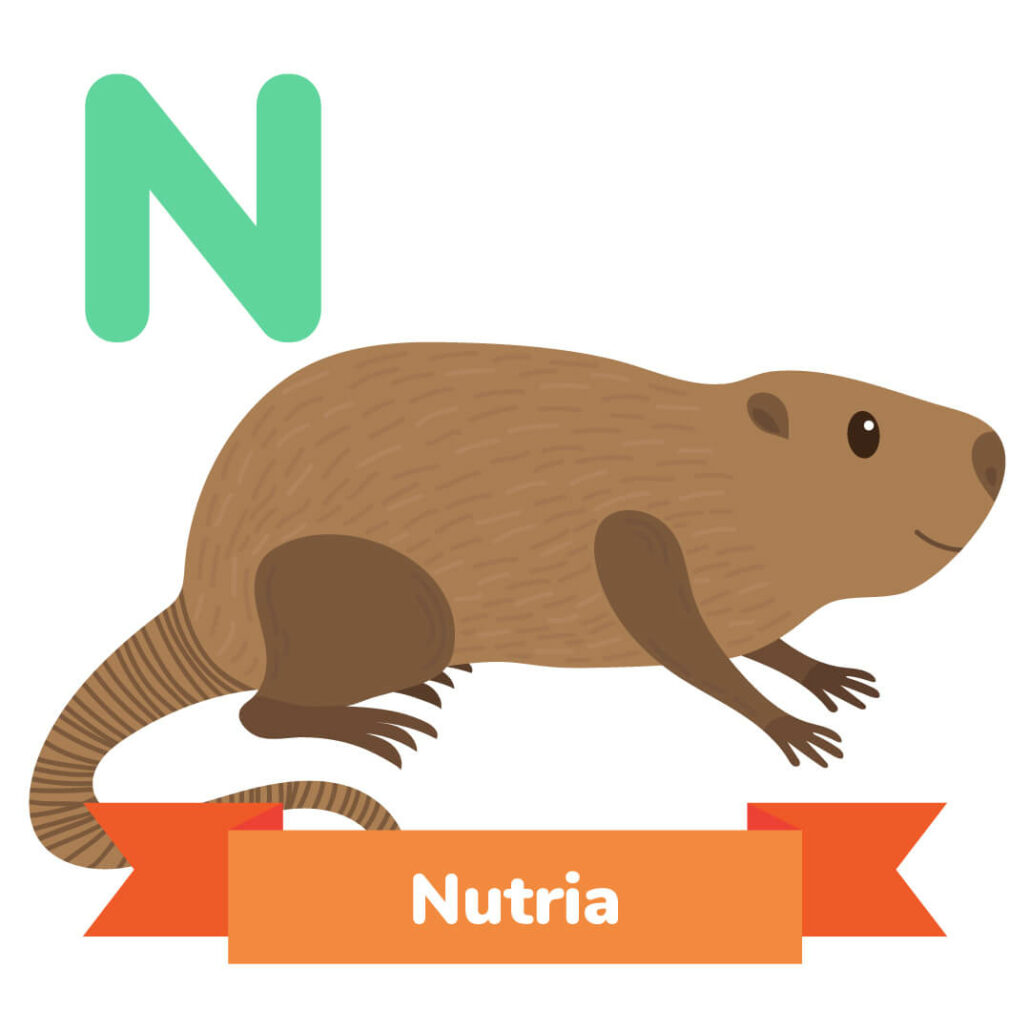
A very social species, the nutria is a semiaquatic rodent that can live in large colonies with a high reproduction rate.
Also known as coypu, the nutria is large and herbivorous.
Their diet mainly consumes of aquatic plants and roots.
They are part of the mammalian family and can live anywhere from eight to ten years in the wild.
The creatures are web-footed and are very strong swimmers that can remain underwater for as long as five minutes.
They can dwell in wetlands, riverbanks, or lakeshores. Female nutrias typically have two or three litters each year, with five to seven offspring in each litter.
27. Numbfish:
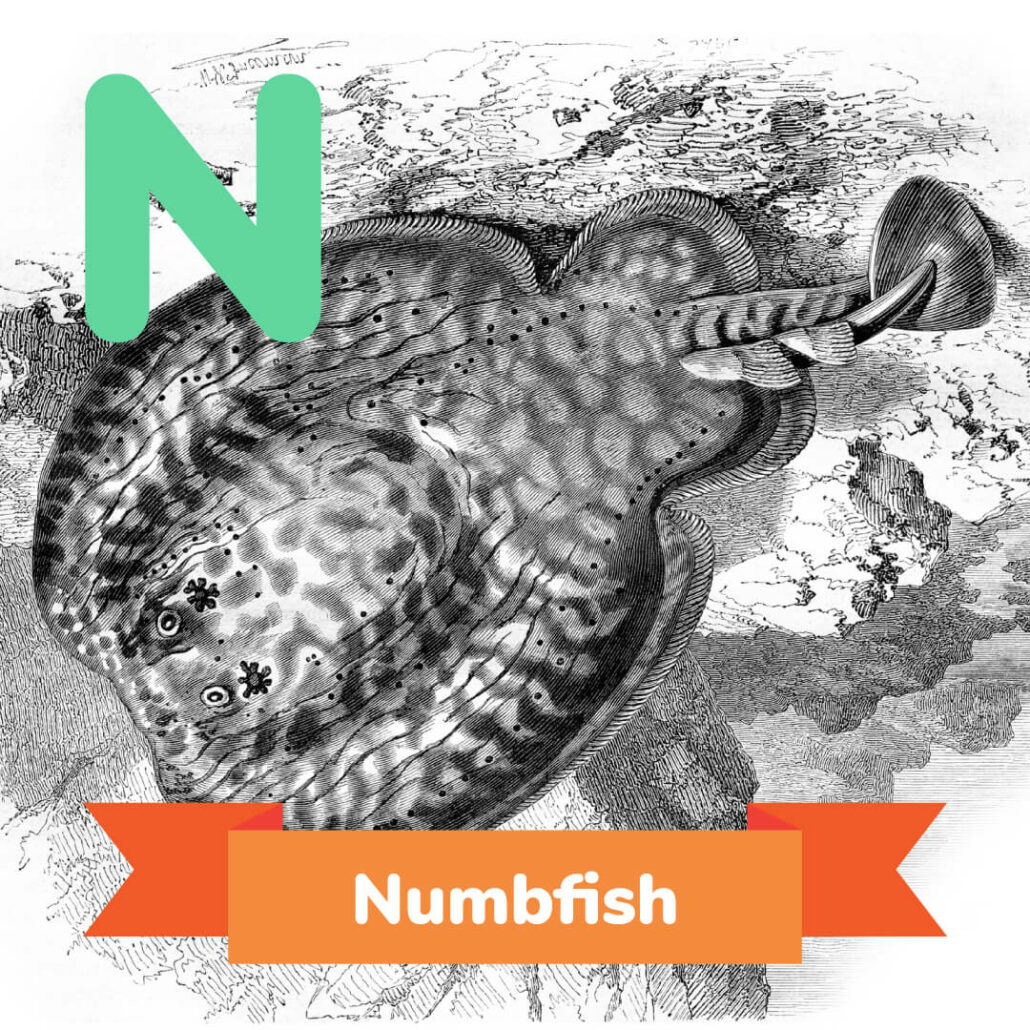
Numbfishes belong to the family Narcinidae and are a group of electric rays.
They dwell at the bottom of bodies of water and can produce powerful electric discharges used for defense.
The numbfish is an Australian ray that prefers sand flats.
These fish are primarily cartilaginous and have large, rounded pectoral fin discs and somewhat long tails.
Strictly marine, the numbfish does not appear in rivers or lakes. They can range anywhere from 15 to 66cm long in size and have a snout that is elongated.
Protractible jaws support numbfish in consuming prey as this animal is a slow-swimmer and requires the advantage of a jolt of 8-37 volts.
28. Nurse Shark:
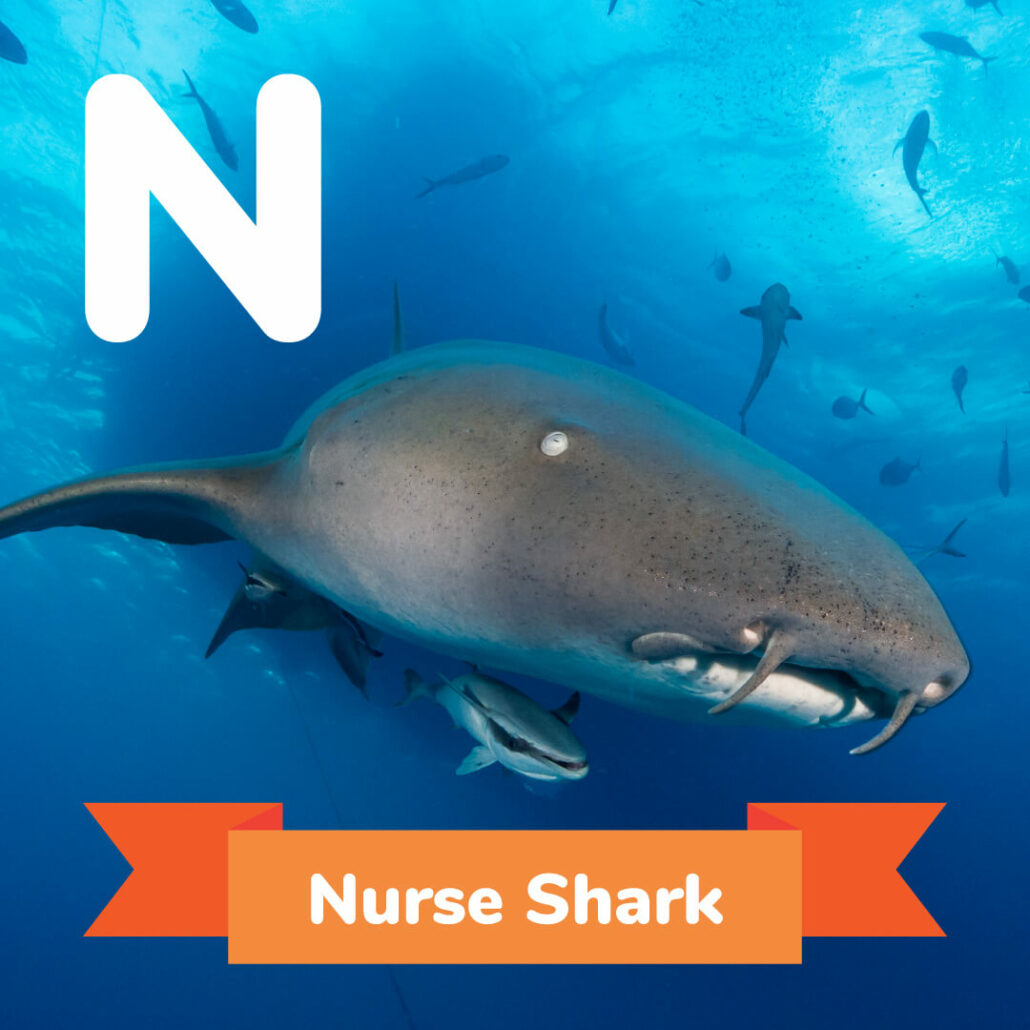
Originally targeted for their liver oil and skin which produces high-quality leather, the nurse shark is a species that is nocturnal and scouts the bottom of the sea for its prey.
Nurse Sharks primarily prey on crustaceans, stingrays, and mollusks and are not typically aggressive.
Some attacks have been recorded but are rare and due to the result of provocation.
These sharks are yellowish-tan to dark brown and average in weight of over 200 pounds and 7.5 to 8 feet long.
Nurse sharks are not currently endangered; however, their population has decreased over the past few decades.
A somewhat social creature, nurse sharks occasionally are spotted in groups of up to 40 sharks lying close together.
29. Northern Right Whale:
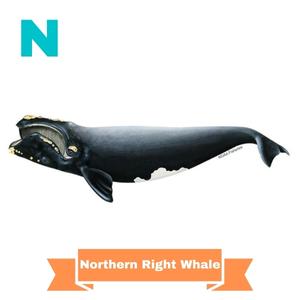
There are two species of the northern right whales, the North Atlantic right whale and the North Pacific right whale.
The north pacific right whale is a very large baleen whale that is rare and endangered, listed as “threatened” according to its conservation status.
In some regions, the whales have been thought to have decreased from over 20,000 to the low hundreds.
Female Pacific right whales are commonly larger than their male counterparts.
These whales typically weigh anywhere from 110,000-180,000 pounds, almost twice as much as a typical humpback whale.
30. Noolbenger:
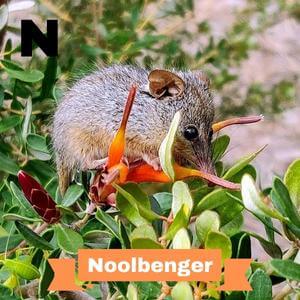
The noolbenger is a honey possum which is a tiny marsupial found in Australia.
The noolbenger is vital in being a pollinator for plants as it feeds solely on pollen and nectar. Itis the only species in its family, the Tarsipedidae.
This possum is a nocturnal mammal that has a pouch in which the females carry their young in.
Noolbengers are particularity fond of consuming the Australian honeysuckle and feeds mainly during the night, moving from plant to plant.
Males are typically two-thirds the size of their female counterparts.
Currently the largest threat to the honey possum is wildfires, however, the species is not labeled as endangered or threatened.
31. Nutcracker:
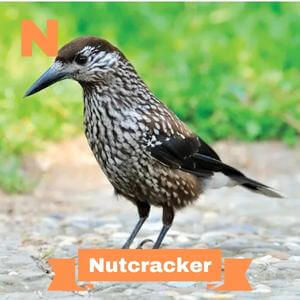
Nutcrackers include three species in their genus: Nucifraga, Clark’s Spotted and large spotted.
The Clark’s Butcracker lives in the Rocky mountains in the US and Canada.
The Nutcrackers have thick bills that they use to tear through pine cones and carry seeds to hiding and save them for winter.
One Nutcracker can hide more than ten thousand seeds during the summer and also remember where he hide them.
The few that these birds actually forget contribute to the regeneration of pine forests – Nature is wild!
32. Nuthatch
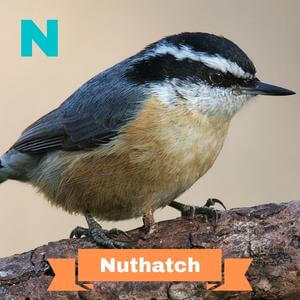
There are 28 species in the Sittidae family and this brown headed Nuthatch has a call that is so cute you would want to hear it all day long.
You can find this bird in North America and you can spot them clinging onto trees in the upside down position, similar to a bat, but not just like, they tend to have more of an angle stand, not 90 degrees position.
33. Nkupe
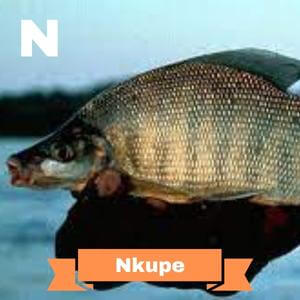
Found in South Africa, the Nkupe is a fresh water fish that loves large lakes and rivers.
The Nkupe can grow to a weight of up to 16 pounds! And it’s a very popular game fish for fishermen.
Nkupe means copy in the local langauge of Bantu around Malauwi where this fish resides.
The local population of Nyanja coined this name and we have no idea what the copy of this fish is.
34. Neddicky
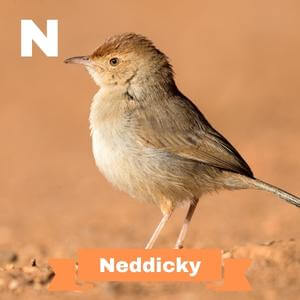
A robin sized song bird, the Neddicky is also known as Piping Cisticola.
You can find this bird ONLY in Central and Southern Africa and you can recognize it by its sporty rusty red cap and fur.
The bird has the habit of building a ball shaped nest made out of spiderwebs and dry grass. It looks like an igloo just not from ice.
35. Nunbird
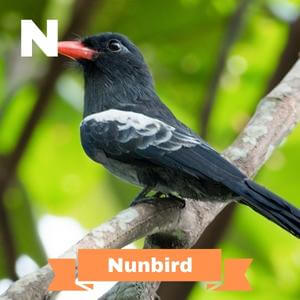
The Nunbirds belongs to the group of puffbirds in the genus Monasa.
You can find these birds mainly in South America and while its habitat is a pretty huge area, some researches assumed that this species is in decline.
The Nunbird is yet another animal on this list with a unique name that looks like a song bird which is a very common thing among birds.
36. Nicator
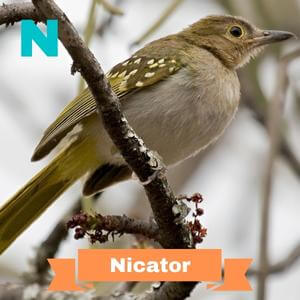
Nicator is in a group of song birds located in Africa.
The official name of the bird is the Nicatoridae and there are only three species known for this bird:
- The Western Nicator
- The Eastern Nicator
- Yellow Throated Nicator
We do not currently have much more info about this bird and will update this paragraph when we do.
37. Nyala
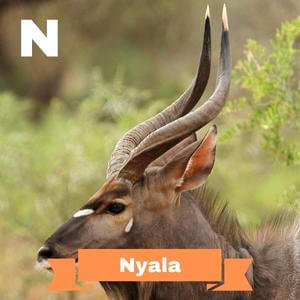
Out of all the spiral horned antelopes, the Nyala is showing the greatest sexual dimorphism, which is a fancy word for differences between the sexes.
You can find this animal in Southern Africa and the young females start with bright rusty orange coat and white stripes and dots that slowly changes with age and the males change their colors to a brown coat with black spots.
Because this animal loves to hide, it is very difficult to spot them in the wild so they become a popular animal photography challenge.
38. Norwegian Forest

A breed of domestic cats that is the national cat of Norway no less.
While the species name does not really start with an N, because it’s a cat, the reason we included it is because of the vast popularity of it and that fact that’s its the national cat of Norway ( which also starts with N )
So it is fitting. The cat has adopted over the years to live in very cold weather and has a very thick and long silver color coat to protect it from the cold.
There you have it. Some of our favorite animals starting with the letter N. Did you learn something new? It’s always fun learning about new creatures and how they live.
Make sure you check out our post on animals that hibernate and our list of animals that live in the desert.
More lists of animals:

